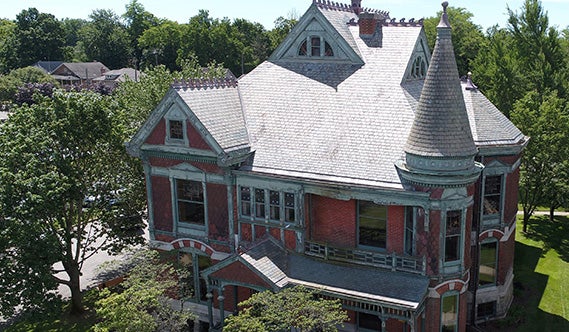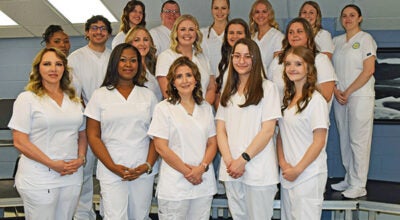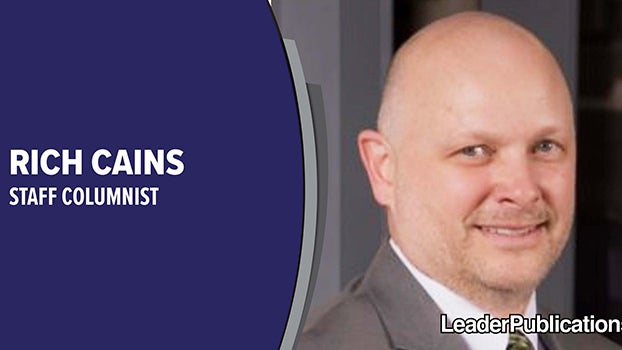New look proposed for history center and mansion
Published 10:23 am Friday, October 13, 2017

- The Chapin Mansion, located at 508 E. Main St. in Niles is pictured here. (Submitted photo)
Inside the Chapin Mansion, ornate wood fixtures, stained glass windows and Queen Anne architecture are among the features glimpsed at the historic home built by Ruby and Henry Chapin in 1882. But what is also visible at the mansion are vacant rooms, cracking paint and old carpeting.
With a proposal on the table to give the mansion and adjacent Fort St. Joseph Museum a whole new look, museum goers could be seeing a whole lot more to help engage them in Niles history.
On Monday, Community Development Director Sanya Vitale gave a presentation
during a committee of the whole meeting that showed city council members how the mansion could function as an extension of the Fort St. Joseph Museum. The upgrades would offer visitors a number of interactive exhibits, new historical displays, while providing the room at the history museum to feature more artifacts from the finding of the Fort St. Joseph archaeological dig site, as well as other opportunities.
“It is more effective use for both buildings,” Vitale said. “Currently the mansion is sitting empty. It has some beautiful fixtures and very few artifacts, therein it would cost hundreds of thousands of dollars to restore it to its original condition. It’s boring. There is nothing in there [the mansion].”
With trends on the rise to use historic homes as museums, the mansion could be a fitting location to house new exhibits, Vitale said.
Vitale asked council members to envision the empty rooms being repurposed into engaging exhibits such as Niles sports history. Adding an interactive component, such as a mayor’s office, could also add another way to entice youth into learning about local history.
“Wouldn’t it be cool to see a mayor’s desk with a big pen on it, where students could right proclamations for their friends and family?” Vitale said.
Since the Chapin Mansion served as City Hall for 80 years, with the facilities moved in 2012, the mayor’s office could also serve as a way to connect Niles history to the mansion.
Other ideas included an exhibit paying homage to Niles celebrities like journalist Ring Lardner, U.S. Senator and probate judge Thomas Fitzgerald and All-American Girls Professional Baseball League player Lillian Luckey.
With more room available in the mansion, collections that have been in storage could fill the empty space, while also offering room for traveling or temporary exhibits.
Niles History Center Director Christina Arseneau assured those listening that the historical features that have long drawn people to the history center and mansion would remain intact.
“People can still come and see all the [mansion’s] woodwork and mantels, the upgrades would just give them new ways to further interpret those features,” Arseneau said.
Among the proposed ideas to do so is to add panels that could describe the house’s history or interpret items, such as one famed wood panel which features a host of cherub angels working on art projects.
With the goal to also make the mansion more accessible to people of all abilities, plans would also be in the works to restore the porch of the mansion and add a ramp. Restoration of the original chandelier is also in the works to be reinstalled in 2018.
Changes would also be in the works for the Fort St. Joseph Museum, which served as the carriage house to the Chapin Mansion when it was a home. With the last updates to the museum having taken place 15 years ago, Vitale said some of the exhibits have become out of date.
Among some of the notable upgrades would be the opportunity to spotlight artifacts discovered at the Fort St. Joseph River, where a partnership with Western Michigan University archaeologists has uncovered thousands of historic items throughout 20 years of work at the dig site. With little space to display the artifacts, smaller artifacts, such as beads, go unseen.
“What we would like to do is get those artifacts out so that we can have thousands on display,” Vitale said. “And we can get our community and other communities more interested in fort projects.”
Arseneau and history center staff have already been working to upgrade exhibit labels and make them more readable and concise and such would be the format for all material in the museums.
A budget plan has not yet been devised for the proposals, but Arseneau said she hopes to obtain grants to cover some of the costs. Community fundraisers will also be necessary, if plans are approved, she said.






